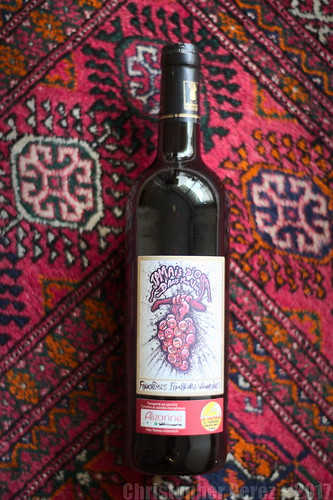Thirza Vallois wrote in her book Around and about Paris, the 13th-20th arrondissements, copyright 1997, "... Another survivor from the past is an antiquated boulangerie at no 105 rue Vercingetorix, on the corner of rue Gregovie, Le Moulin de la Vierge (the Virgin's mill), dating from 1907. Candy-colored angels float in a candy-blue sky of an optimistic ceiling, while traditional French bread and other appetising savories are on display in the window..."
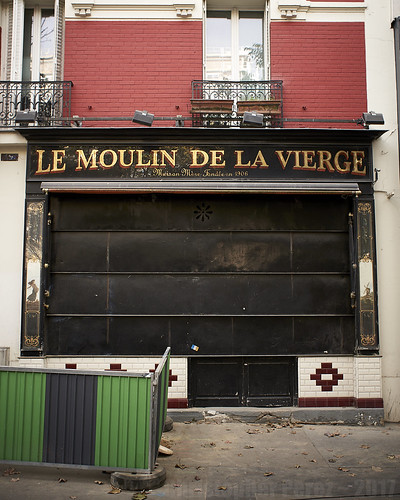
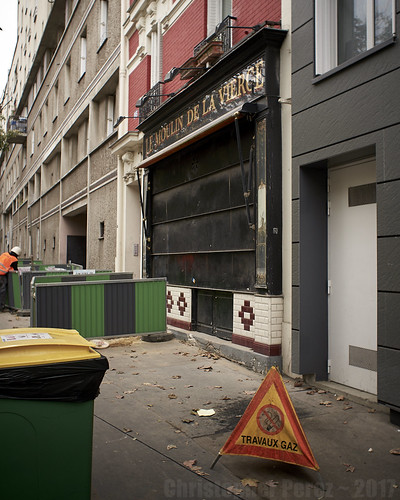

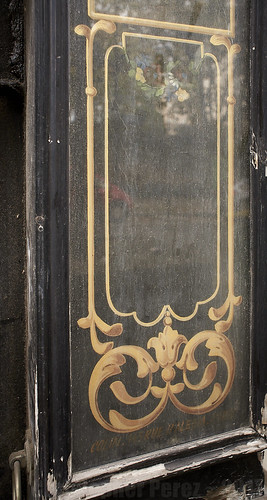
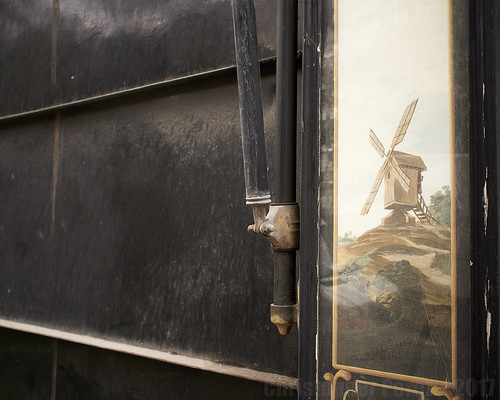
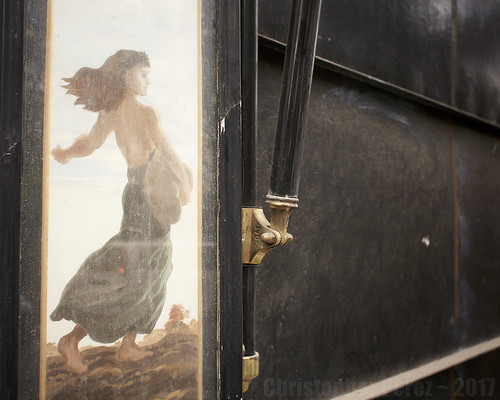
Judith and I enjoy Mme Vallois' books on Paris. They are filled with vivid descriptions, histories, and maps that lead a reader-flaneur through very interesting sections of the city. I remember reading her description of Le Moulin years ago when we still lived in the States. The boulangerie was just another of the many charming places a person could visit.
The author was talking about a boulangerie that is over in the 14eme arrondissement. It turns out that rue Vercingetorix is the road I walk on my way to my favorite suds shop, the Bootlegger. For several years after moving to our present address I would pass the boulangerie and note that, yes indeed, the shop was incredibly charming. Being intimidated by my lack of language skills I never stopped in to buy something no doubt tasty.
The author was talking about a boulangerie that is over in the 14eme arrondissement. It turns out that rue Vercingetorix is the road I walk on my way to my favorite suds shop, the Bootlegger. For several years after moving to our present address I would pass the boulangerie and note that, yes indeed, the shop was incredibly charming. Being intimidated by my lack of language skills I never stopped in to buy something no doubt tasty.
The surrounding buildings are mostly modern highrises, some which overlook the TGV tracks leading south out of Gare Montparnasse. The area doesn't feel "alive" in the way other parts of town do. People feel depressed and "out of sorts", if you know what I mean. Certainly there are shops along the major road to the south, and along certain side streets just north of the area of le Moulin. This stretch of rue Vercingetorix feels strangely situated, abandoned actually.
I was surprised to see the very French boulangerie that Mme Vallois describes in her book smack in the middle of an immigrant neighborhood. The area is currently settled by black Africans and a few Algerians. Perhaps the area was inhabited by the French back in 1907 when the store first opened, and only later did the populations transitioned. There is practically no other storefront on this stretch of road and the whole thing seems like an anomaly of commerce, culture, and history.
One day as I headed up the street I noticed that the heavy iron shutters had been pulled down and a message had been written on a small piece of paper that was taped to the black cladding. It read that due to an emergency the shop was temporarily closed.
If there's one thing I've learned in the five short years of living here it is that when a French shop owner writes "temporarily", what they really mean is "forever and ever, amen! and thanks for taking the time to read this message." Or something to that effect.
Sure enough, for the past two years the black iron cladding has remained firmly pulled down protecting the windows from breakage and the contents of the interior from being vandalized. Each time I pass on my way to the Bootlegger I think "I should take pictures of this place" before it's too late. So, on my most recent Beer Run I finally took a camera and snapped a few images.
I now wish I'd made a stronger effort to overcome my French language limitations. I'm sure there was an interesting story to be told about the old boulangerie.






